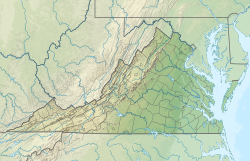Description
The Keyser is a nodular limestone overlain by thick- and thin-bedded limestone and laminated limestone at its type locality in Keyser, West Virginia.
In central Pennsylvania, the basal "calico" limestone is a fossiliferous, medium-light- to medium-gray very thick bedded calcilutite containing numerous small irregular patches of clear calcite. The abundantly fossiliferous, nodular limestone at the base overlies the "calico". Overlying this is 5 to 6 m of fragmental calcarenite containing abundant crinoid columnals. Above the calcarenite is 6 m of fossiliferous, banded calcisiltite. The uppermost 15 m is a sequence alternating between laminated, stromatolitic calcisiltite, and calcilutite and calcisiltite that are argillaceous and fossiliferous. [3]
Depositional environment
The depositional environment of the Keyser is interpreted as shallow marine and tidal flats, occurring in cycles. [4]
Stratigraphy
Contact with Tonoloway Formation is probably conformable, but sharp enough to suggest an unconformity. Upper contact with the Old Port Formation is conformable.
The Keyser was divided into three members by J. W. Head in 1972. [5] These are, from lowest to highest, the Byers Island Member, Jersey Shore Member, and La Vale Member. The type locality of the Byers Island Member is at Selinsgrove, Pennsylvania, where it is 93 feet thick. The type locality of the Jersey Shore Member is at Jersey Shore, Lycoming County, Pennsylvania. The type locality of the La Vale Member is at the Corriganville quarry, Allegany County, Maryland, and is named for the nearby town of La Vale. This nomenclature is accepted by the USGS.
In Virginia and West Virginia the Keyser is divided into Upper and Lower Members by the Big Mountain Shale Member. [6]
Notable outcrops
- Keyser, West Virginia (type section), quarry and roadcut east of the town, on West Virginia. [8]
- Old Eldorado Quarry, at Mile Marker 30 along I-99/U.S. Route 220 in Blair County, Pennsylvania
- Alleghany Furnace Quarry, Altoona, Pennsylvania
- St. Clairsville/Osterburg Exit of I-99 in Bedford County, Pennsylvania (nearly vertical orientation)
- Abandoned quarry in Tyrone, Pennsylvania
- Quarry at Canoe Creek, Pennsylvania
- New Enterprise New Paris Quarry, Chestnut Ridge, Bedford County, Pennsylvania
- Roadcut along U.S. Route 30 (Everett bypass) through Warrior Ridge, Bedford County, Pennsylvania
- Strait Creek section on County Road 629, 1.5 miles south of U.S. Route 220, Strait Creek, Highland County, Virginia [6]
- Smoke Hole section on West Virginia Route 2, 1.5 miles west of U.S. Route 220, Pendleton County, West Virginia [6]
This page is based on this
Wikipedia article Text is available under the
CC BY-SA 4.0 license; additional terms may apply.
Images, videos and audio are available under their respective licenses.





